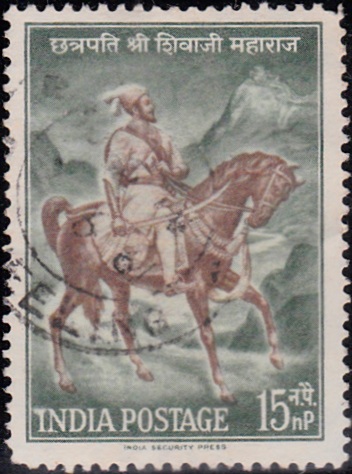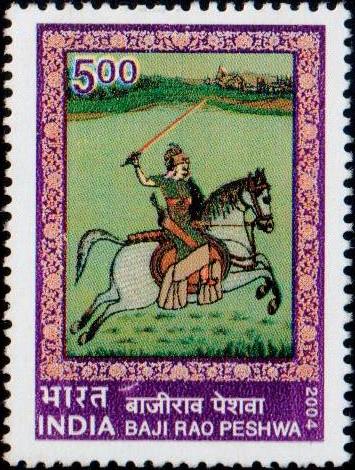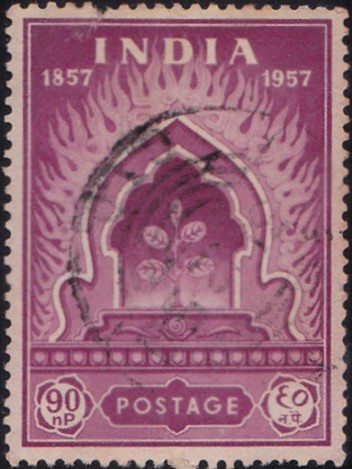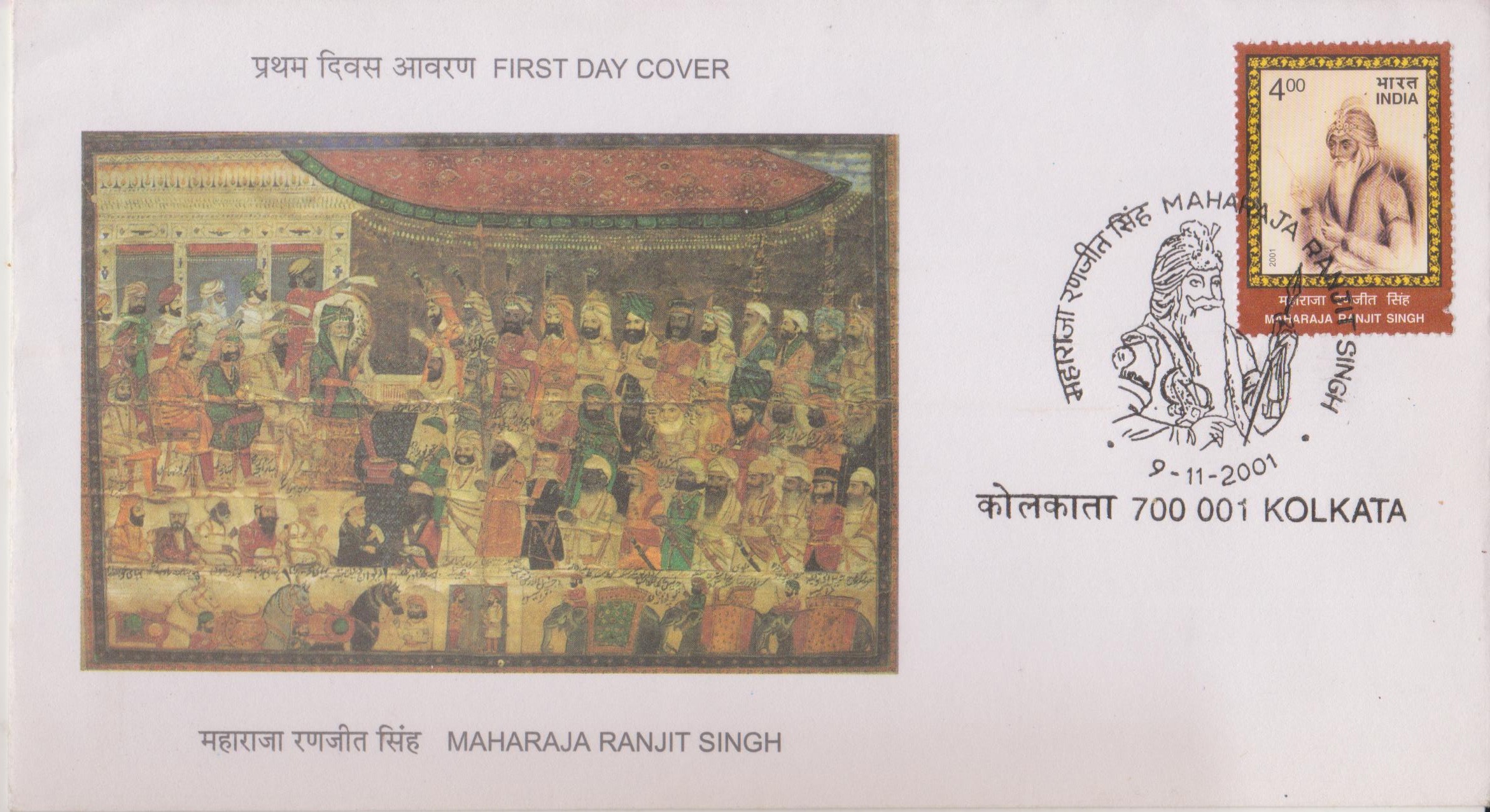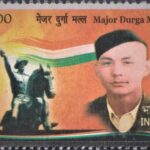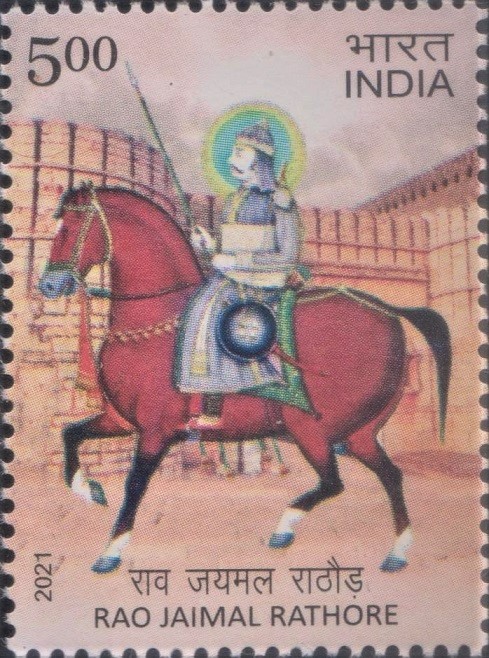
Rao Jaimal Rathore
A commemorative postage stamp on Jaimal Rathore, ruler of Merta, Rajasthan, cousin of the Hindu saint Mirabai :
 Issued by India
Issued by India
Issued on Sep 17, 2021
Issued for : Department of Posts is pleased to issue a Commemorative Postage Stamp on Rao Jaimal Rathore.
Credits :
Stamps/FDC/Brochure : Shri Sankha Samanta
Cancellation Cachet : Smt. Nenu Gupta
Type : Stamp, Mint Condition
Colour : Multi Colour
Denomination : 500 Paise
Stamps Printed : 201600
Printing Process : Wet Offset
Printer : Security Printing Press, Hyderabad
Name : Jaimal Rathore
Born on Sep 17, 1507 at Merta, Rajasthan, India
Died on Feb 22, 1568 at Chittorgarh, Rajasthan, India
About :
- Rao Jaimal was born on September 17th, 1507 as the eldest son of Rao Veeramdeo, the ruler of Merta. In 1544, after the death of his father, Jaimal ascended to the throne of Merta. He is remembered widely as one of the greatest warriors, generals, military strategists and statesmen to be born in the gifted land of Bharatvarsha. Hailing from the illustrious clan of Rathore rulers in Marwar or Jodhpur, he ruled over the rich realms of Merta and Badnore.
- Rao Jaimal won immortal fame and glory as a soldier and leader due to his strong defence of the fort of Chittor during the Mughal invasion of 1568. When Akbar launched a full-scale invasion of Mewar in 1567, Maharana Udai Singh, the ruler of Mewar, eagerly sought the assistance of Jaimal in bolstering the counter-offensive. When the siege of Chittor assumed dangerous proportions, the Maharana and his family vacated the fort in order to wage a longer struggle. The Maharana, then, appointed Jaimal as the commander-in-chief of the war effort. Thus, in the long war that followed, Jaimal led the Mewari forces against a massive Mughal army, thus, displaying exemplary military skills.
- Despite facing heavy odds, Jaimal continued attacking the invaders with such ferocity that a stalemate situation soon arose. Facing deadly cannon-fire, exploding ramparts, attack of deadly arrows and a rising toll of casualties, he struck back with double force to destroy the enemy ranks. After holding on for more than a year, when the tide started turning against Mewar due to sheer mismatch of numbers and resources, Jaimal decided to fight to the finish. Along with his trusted men who had bled besides him, he opened the gates of the fort and charged into the enemy ranks. He was martyred at the gates of Chittor fort where a cenotaph celebrates his penultimate sacrifice even to this day.
- Jaimal’s lion-hearted courage and invincible fighting spirit, earned him free-flowing praise and admiration not only in the annals of his own land but also in those of his adversaries. Akbar, his generals and the Mughal historians were awe-struck by the bravery with which Rao Jaimal offered a stout and resolute resistance against the invading force. After the catastrophic war of Chittor, a stone statue of Jaimal seated on an elephant was installed at the main-gate of Agra fort as a mark of respect for the great fighter. Indeed, Jaimal was one of the most influential and leading politicians of his age who impacted the turn of events both at the provincial and imperial levels.
- Text : Based on information received from the proponent.
Subscribe
Login
0 Comments


